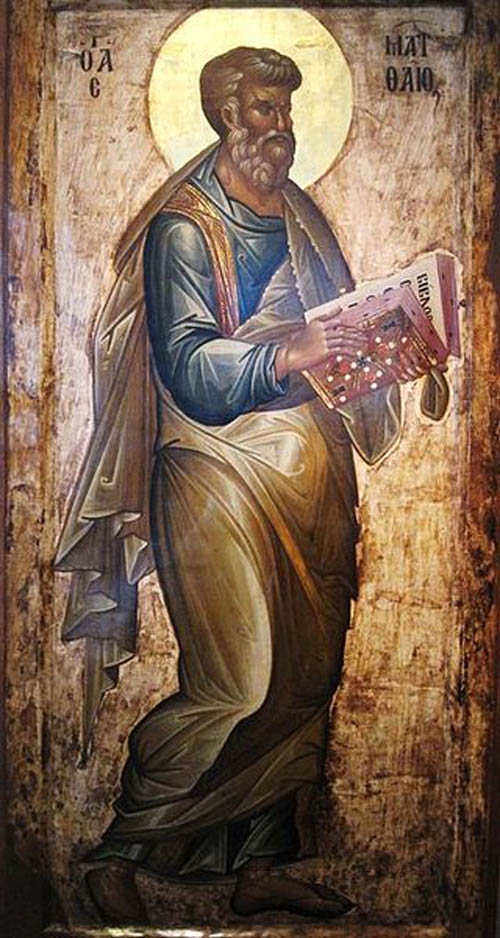A SCOTTISH chapel was built as a shrine for the skull of one of Jesus’ disciples, experts claim.
Researchers found Rosslyn Chapel in Midlothian was built to protect the head of St Matthew after it was smuggled out of France.
St Matthew – or Matthew the Apostle – is said to have been a tax collector for the Romans who gave up his duties in order to follow the teachings of Jesus but it is unknown how, where or when he died.

But a new book said “every single detail” of the chapel’s architecture and carvings point to it being a shrine to the famous disciple where it was kept safe from invading English armies.
Alan Butler and John Ritchie – authors of Rosslyn Chapel Decoded – said it was not uncommon for chapels to be built for specific relics such as the St Chapelle in Paris which was built around the relic of the Crown of Thorns
Mr Butler said: ““There has been so much written about Rosslyn Chapel and what the carvings mean.
“But it does not stretch credibility that the chapel represents this story about St Matthew. Every single detail fits.
“What we are saying is what is the most likely explanation. The chapel was built as a giant reliquary for the skull of St Matthew.”
The authors also claim some of the elaborate interiors also point to the chapel being the safehouse for St Matthew’s skull.
They said a feature known as the Apprentice Pillar is a representation of a miraculous honey-laden tree associated with the saint.
This relates to accounts in the collection of early Bible stories known as the Apocrypha where the saint’s staff transformed into a fruit-bearing tree laden with honey during his teachings in Myrna in Turkey.
The scripture reads: “It shall become a tree great and lofty and flourishing and its fruit beautiful to the view and good to the sight and the fragrance of perfumes shall come forth from it and there shall be a vine twining round it full of clusters and from the top of it honey coming down.”
Rosslyn was then designed so that honey from beehives hidden in the buttress roof dripped down onto the altar.
The authors say the remains of centuries-old beehives were found under the roof of Rosslyn during recent restorations.
They believe the roof may have been specially constructed to attract bees and that a hole directly above the altar would have allowed honey to drip onto the altar.
Butler added: “Even within living memory, people remember honey dripping down from the roof onto the altar.”
“Direct link”
The chapel was also said to be the final resting place of the Holy Grail in The Da Vinci Code by Dan Brown.
It was founded in 1466 by Sir William Sinclair, 1st Earl of Caithness and a member of a noble family descended in part from Norman knights.
Butler and Ritchie believe St Matthew’s skull was the secret treasure shown to Mary de Guise – the mother of Mary Queen of Scots.
The academics said skull was a secret treasure shown to Mary and it was brought to Scotland under the orders of Enea Piccolomini – a Catholic envoy who was a friend of Sinclair and later became Pope Pius II.
Ritchie said: “At that time they believed it was a direct link with Christ and therefore to God. That’s what relics were all about.”
After visiting the chapel Mary de Guise, the wife of King James V, said: “We bind us and oblige us to the said Sir William and shall be a loyal and true mistress to him. His counsel and secret shown to us we shall keep secret.”
The official story of the Apprentice Pillar – told by chapel guides – is that the pillar was created by an apprentice who was murdered by his master.
But many scholars said the carvings that represent the apprentice and the master have been altered and that the story itself is older than the chapel.
The sacred skull was kept secret and hidden in the network of tunnels between Rosslyn Castle and the chapel to keep it safe from rampaging English armies.
Ritchie added: “If it had been known it was there, the chapel would have been destroyed on several occasions.”
Ian Gardner, the director of the Rosslyn Chapel Trust, said: “What I like is that lots of people have different ways of interpreting Rosslyn Chapel, its history and its carvings and the legends around it.
“It is very hard to prove or disprove any of them but it all adds to the mystery of the place.”

